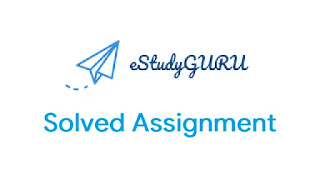
As part of general management, the small ruminants undergo the following major painful and stressful procedures, among others:
· Castration
· Tail docking
· Shearing
Minimum Standards in General Management
Castration
· When castration is unavoidable for welfare reasons, pain relief shall be provided if a practical method is available in the farm and male kids and lambs shall be castrated at the age of 1–2 months.
Tail docking
· Tail docking procedure causes both acute and chronic pain, the rationale for doing it and the effectiveness of pain mitigation strategies shall be considered as part of welfare plan. When tail docking is unavoidable for welfare reasons, sufficient tail is retained to cover the vulva (in female) and the anus (in male).
Shearing
· Proper handling, immobilization, slow and careful combing shall be performed while shearing. The combing teeth shall not be sharp/scratch the skin of the animals while shearing. Stud combs commonly known as cover combs which leave more wool on the animal in colder months, giving greater protection shall be considered.
· Adequate farm management shall be ensured after shearing to prevent welfare issues such as hypothermia.
· All shearers shall be formally trained and are to be paid by the hours/ days they work (not based on speed//number of sheep shorn).
Stockmanship
· Well trained and adequate number of farm workers/Sheppard with knowledge and competence shall look after the farm.
Good Practices in General Management
· Castration: Although castration is intended to reduce the risk of other welfare problems, it may not always be as necessary or justifiable as farm owners believe. When castration is unavoidable for welfare reasons, pain relief such as local anaesthesia should be provided. Male kids and lambs should be castrated at the age of 1–2 months. When they are marketed at 3-4 months of age, no need for castration.
· Tail Docking: Prevention of fly problem is the primary reason given for tail docking. But there is insufficient scientific evidence to support this reason. Fly problem also depends on flock management conditions, region and breed. Routine tail docking is unlikely to benefit sheep that do not have wool or in regions where fly problem is absent. Tail docking is not very common in India. When the tail is docked, it is recommended to leave tail covering at least the anal region and vulva of the small ruminants.
· Shearing: Wool breeds of the sheep and goat should be shorn at least once every year, to help reduce the risk of external parasites and keep the animals comfortable. The stress and pain by the combing method could be reduced by handling of animals in a low-stress manner. Combing should be performed slowly and carefully, ensuring not to yank the comb when it gets stuck in tangled hair to avoid unnecessary pain. However, controls and standards to ensure combing is performed in a low-stress manner are lacking. Shearing is much faster than combing, but poor handling during shearing can also result in increased fear, distress and skin injuries causing unnecessary stress and pain. Shearers are not formally trained and are paid by the number of animals shorn, not by the hours/days they work. So welfare and care of the animal is secondary over speed. Shearing has to be carried out carefully and sympathetically to avoid welfare problems such as handling stress and injuries. It is also important that shorn sheep and goat are managed correctly to protect them from weather conditions.
· Stockmanship: Effective welfare of flock depends mostly on farm workers/ stockman who should be aware of the welfare needs of small ruminants. The required stockmanship knowledge and skills related to general management, feeding, breeding and healthcare can be acquired through training or by working with an experienced person on-farm.
· Responsible Consumership: It helps reduce the unnecessary suffering of animals kept for wool production by making informed purchasing decisions. Ask the retailer or check the wool product for animal welfare certifications. Where certification schemes are in place, their standards must be publicly available and participating farms must be subject to regular as well as unannounced on-farm audits to ensure animal welfare is not compromised.



0 Comments